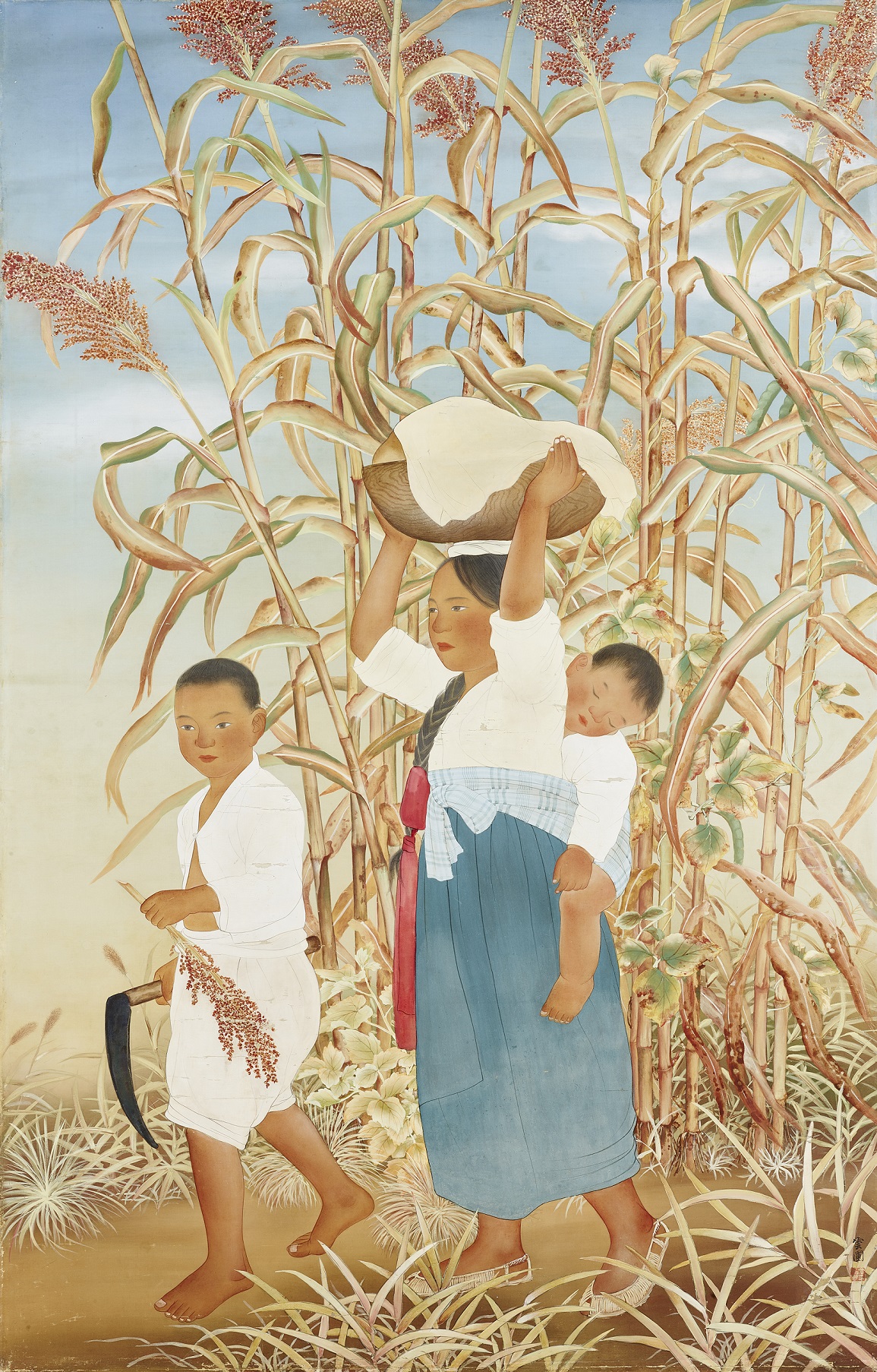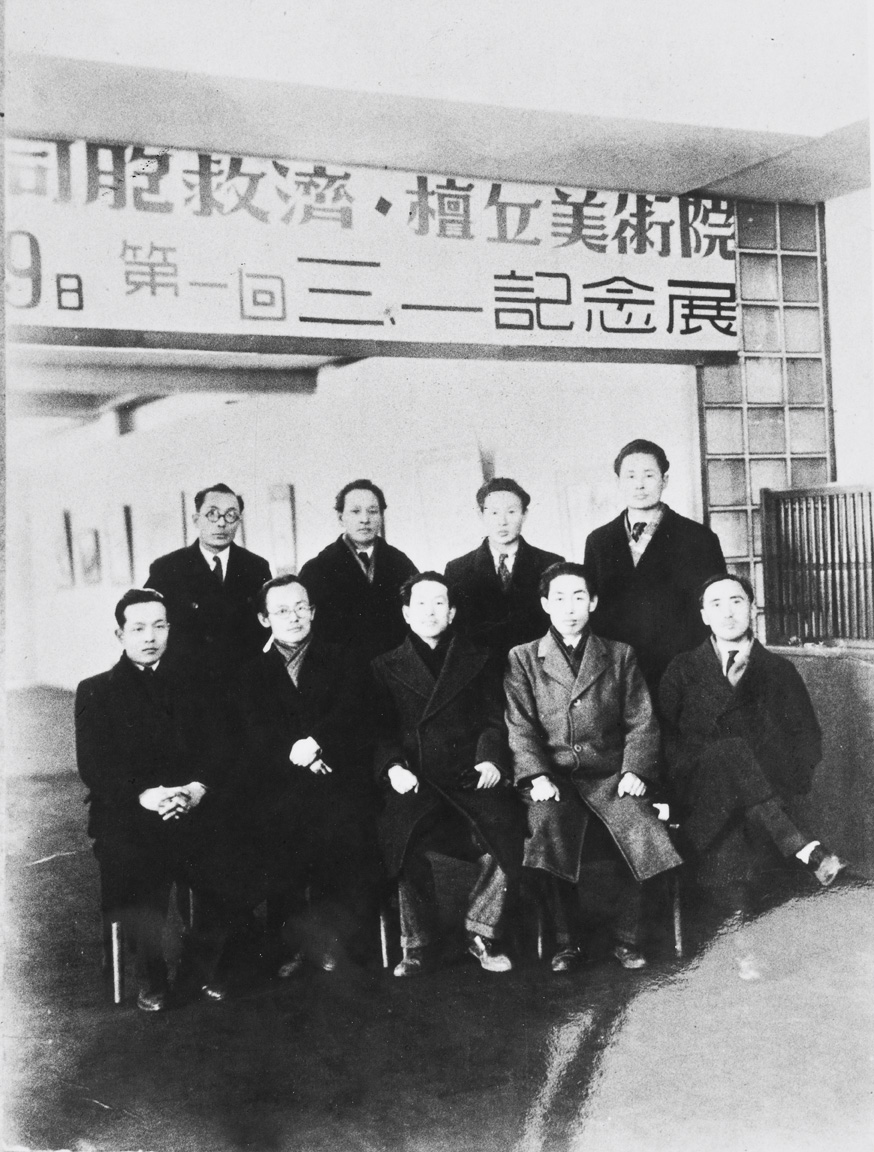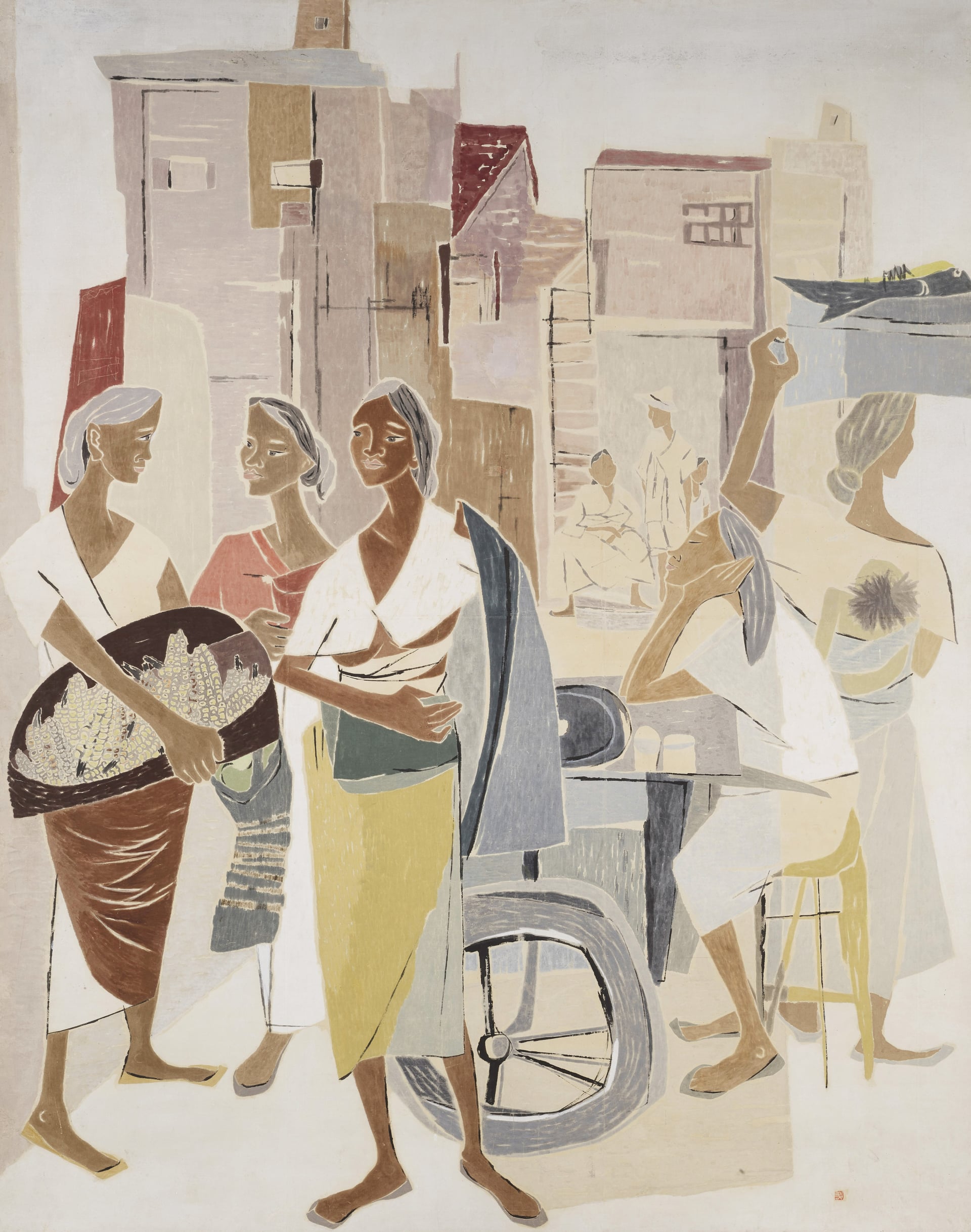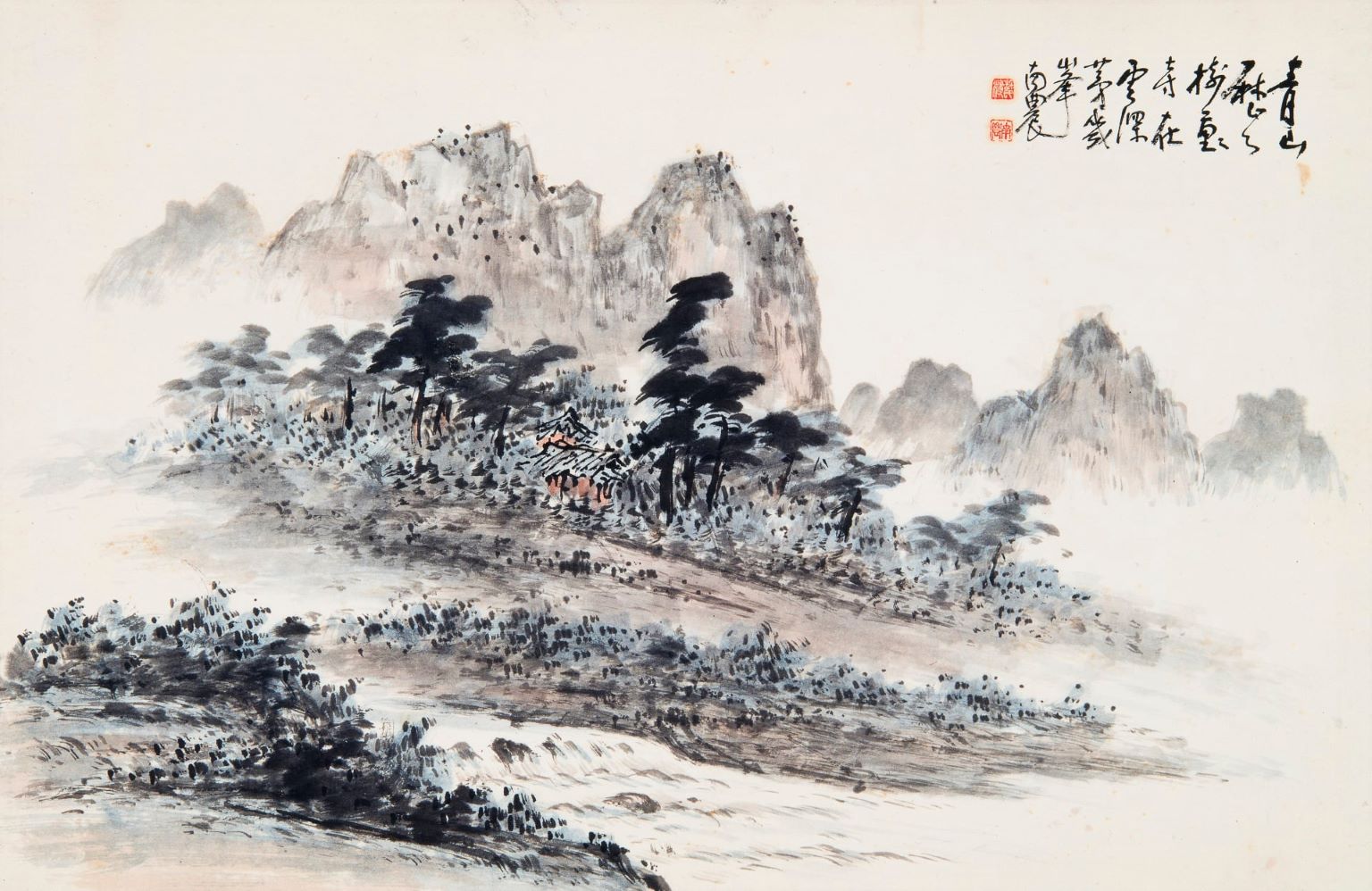
Kim Youngki, A Clear Day in Namhae, 1988, Ink and color on paper, 67.2×94.3cm. MMCA collection
Kim Youngki
* Source: MMCA
Related
-

Kim Kichang
Kim Kichang (1913-2001, pen name Unpo or Unbo) studied Eastern painting at Kim Eunho’s art studio Nakcheongheon. After his debut in the tenth Joseon Art Exhibition [Joseon misul jeollamhoe] in 1931, he won special selections from 1937 to 1940, and became a renowned painter. He was appointed as the first president of Paek Yang Painting Association and became a professor at Hongik University and Soodo Women's Teachers College. He was awarded the Order of Civil Merit, Peony Medal in 1981 and the Korean Art Academy Award in 1983. After he passed away in 2001, he was awarded a posthumous Geumgwan Order of Culture Merit award. Although Kim initially focused on colorful figure paintings, following in the legacy of his mentor Kim Eunho, in his later career he collaborated with his wife Park Rehyun to modernize Korean painting by adopting cubism and abstraction. He reinterpreted traditional folk paintings in his representative works, such as Blue-green Landscape Painting series started in the 1970s and his Fool’s Landscape Painting in the 1980s and was inspired by portraits of historical figures. He contributed to the development of Korean modern art by working in an expanded formal territory from figuration to abstraction and addressing subject matter from folk painting, to figure and landscape painting.
-

Dangu Art Academy
A Seoul-based art institute formed directly after national independence in 1945, by Lee Ungno, Chang Woosoung, Lee Yootae, Bae Ryeom, Kim Youngki, Cho Joonghyun, Jeong Honggeo, Chung Chincheol, and Cho Yongseung. The purpose of this academy was to reduce the Japanese influence on Korean art and to restore cultural legitimacy to traditional painting. The academy closed following a 3rd joint exhibition in 1948. The academy is significant in that it pursued a different and nationally specific perspective on Korean art following independence.
-

Park Rehyun
Park Rehyun (1920-1976, pen name Woohyang) studied at Gyeongseong girls Normal School and graduated from the Department of Japanese Painting at Tokyo Women’s Art School in 1944. She studied at the Pratt Institute in New York and Bob Blackburn’s Print Studio from 1969 to 1973. After she married Kim Kichang, she held several solo and collaborative exhibitions with her husband and contributed her works to Paek Yang Fine Art Exhibition. She won a Changdeokgung Palace Award at the Joseon Art Exhibition [Joseon misul jeollamhoe] in 1943, a President Award at the fifth National Art Exhibition (Gukjeon) in 1956, a President Award at the eighth Great Korean Art Association Exhibition in 1956, and a Shin Saimdang Award in 1974. During the colonial period, Park Rehyun produced Japanese style color portraits, then, after independence she moved toward a semi-abstract technique, often featuring the three-dimensional formal interpretation of objects and a division of planes and using traditional Oriental painting materials. In the 1960s, she gradually replaced this approach with a splashed ink and pre-dyeing effect. Then, after moving to the U.S., she expanded her oeuvre to include print and tapestry.
Find More
-

hangukhwa
A type of painting created during the 20th century that uses traditional Korean materials, techniques, and styles. The term emerged from the criticism that traditional-style paintings were called Eastern paintings in Korea, in contrast to China, where they were called national-style paintings, and Japan, where they were called Japanese-style paintings. The term hangukhwa (Korean Painting) entered official use following the overhaul of the educational curriculum in December 1981, and the appearance of the term Korean painting, with the subcategories ink wash painting [sumukhwa] and ink and light-colored painting [damchaehwa] were listed in art textbooks from 1983. The Grand Art Exhibition of Korea also began using the term hangukhwa (Korean Painting), as opposed to Eastern painting, in 1982. Prior to this, Hankukhwahui (Korean Painter’s Association) was used as a collective term for such Korean painters in 1964 and Kim Youngki (pen name Chunggang) argued to use the term Korean painting to define national identity in his essay “On hangukhwa (Korean Painting) and Criticism.” Criticism that Korean paintings, unlike the national paintings of China and Japan, do not have a narrative theme, and that the use of such a term was contrary to contemporary artistic trends, resulted in the term “hangukhwa (Korean Painting)” failing to achieve mainstream use. Hangukhwa (Korean Painting) is currently used interchangeably with the term Eastern painting.
-

Eastern painting
Eastern painting (dongyanghwa) refers to the overall body of works created using traditional East Asian materials and methods, in contrast to Western painting. In Korea, Byeon Yeongro’s essay “On Eastern Painting” published in Dong-A Ilbo on 7th, July, 1920 was the first use of the term. The term then began to be used in Japan first to distinguish Oriental style paintings from Western ones. Until the late Joseon era, both calligraphy and painting were categorized under the term seohwa, but during the Japanese occupation of Korea in 1922, the first Joseon Art Exhibition [Joseon misul jeollamhoe] divided the painting section into Western and Eastern styles. Thereafter, the term Eastern-style painting entered official use in the country. After independence, the National Art Exhibition (Gukjeon) continued to use the term “Eastern painting,” but since 1970, numerous arguments were made to replace it with "Korean painting," because the term was imposed unilaterally during the Japanese colonial era.






